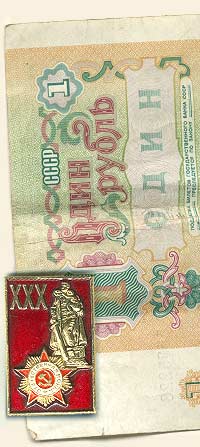The flea market capital
Berlin has more flea markets than any city in Europe. Clive Freeman takes a tour of the city's best.
The history-drenched German capital is famous for its opera and theatre activity, its lakes and rivers, its superbly modernised Olympic Stadium (built in 1936), the Brandenburg Gate and the Reichstag, now topped with a dome designed by British architect Sir Norman Foster.
Apart from all this culture, there's also something more down-to-earth: Berlin's weekend flea markets, which can be found in virtually every district of the city these days.
"Berlin has more flea markets than any other city in Europe," claims Berlin-based Ralf Morawietz, 48, a collector and seller of coins, rare maps and late 19th century German postcards.
"More than 20 are to be found in Berlin," says Morawietz, who is constantly on the move between Berlin and Warsaw, Paris and Barcelona, in search of items for the stall he shares with two pals, one a Kurd, the other a Turk, at a flea market in front of the Rathaus Schoeneberg, formerly West Berlin's Town Hall.
A gifted linguist, who speaks fluent French, English, Polish and Spanish besides German, Morawietz owns thousands of finely-delineated maps of cities, towns and villages in Germany's former East Prussian territories.
Best known among Berlin's 20 weekend flea markets is probably that on the 17th of June boulevard.
In the communist era, the German Democratic Republic's Interior Ministry had custody of the maps. "When the Berlin Wall fell, a city book-store proprietor gained possession of them. Later on, knowing of my interest in maps, he agreed to sell them to me," he confides.
"They are of interest to the Poles, Czechs and Russians living in the former German territories."
Busy at his stall, he says, "I don't display the maps here. I use the Internet for that side of my business. Here, I'm dealing in coins, and late 19th and early 20th century German postcards," he explains.
Nearby, a poker-faced man sells broken-off porcelain heads and body parts of miniature dolls from an earlier age, once produced in factories in Thuringia and Saxony.
A couple of somewhat worn teddy bears, one of them a Hermann, the other a Steiff, win admiring glances. "They're gorgeous," enthuses a matronly American woman wearing a red cape. "But beyond my purse I'm afraid!"
Best known among Berlin's 20 weekend flea markets is probably that on the 17th of June boulevard which leads down to the Siegessäule (Victory Column), marking Germany's 1871 victory over the French, and to the Brandenburg Gate.
Tourists armed with travel guides and backpacks throng stalls packed with a riotous array of objects — including paintings, chandeliers, jumbled cutlery, antique dolls, porcelain figures, curtains, crystal ware and posh-looking tea sets.
“Prices can get hefty here," observes a flea-market veteran. "But there are bargains to be found if you look hard enough."
Art experts mingle with the crowds. So, too, on occasions do detectives hunting lost or stolen art works. Romanian-made "Galle" vases, executed in the style of the French master, have been showing up in Berlin in recent months
Some unwitting tourists have bought them, believing they were genuine Galle glass works.
Florentine C. Bredow, a noted collector of German-made teddy bears, spends most weekends scouring the city's flea markets. "A few years ago you could pick up wonderful bargains. But now the hobby is getting more expensive", she sighs, "and the competition fiercer!"
Her collection includes German-made Schuco, Strunz, Steiff, Hermann, and Zotty bears, as well as dozens of bears used for company promotion purposes.
A jovial blond-haired woman, she horded teddies over a 30-year span, stashing them in every room of her spacious Kurfürstendamm apartment, which ultimately earned her a place in the Guinness Book of Records.
"I started acquiring bears at a young age, when there were few bear collectors around. I got most of them at German flea markets," she says.
Today, Ms Bredow's collection is housed in the Teddy Bear Museum in Hof, Bavaria.
Another popular market is located at Am Kupfergraben in Berlin's Mitte district. It's a paradise for book-worms. Virtually every other stall sells second hand-books, sometimes complete editions by such famous German authors and playwrights as Brecht, Boell and Grass.
Joschka Fischer, the German foreign minister, is sometimes found browsing at books here, before disappearing in the direction of Unter den Linden.
One of the bigger weekend markets is that at the Falkenseer Chaussee, in the city's north-western Spandau district. More than 120 stalls are packed with second-hand clothes — dresses, pullovers and T-shirts, 1970s-style lamps and computer games. .
Besides German and Turkish, Russian is frequently heard among a babble of voices.
In Berlin-Treptow the visitor can combine a trip to the huge indoor Arena flea market with a stroll by the river, and a dive into an off-shore tanker converted into a swimming pool.
"Everything is possible in Berlin," smiles coin dealer Morawietz, who revels in Berlin's diversity.
Clive Freeman
July 2004
источник публикации
Expatica's German news in English


